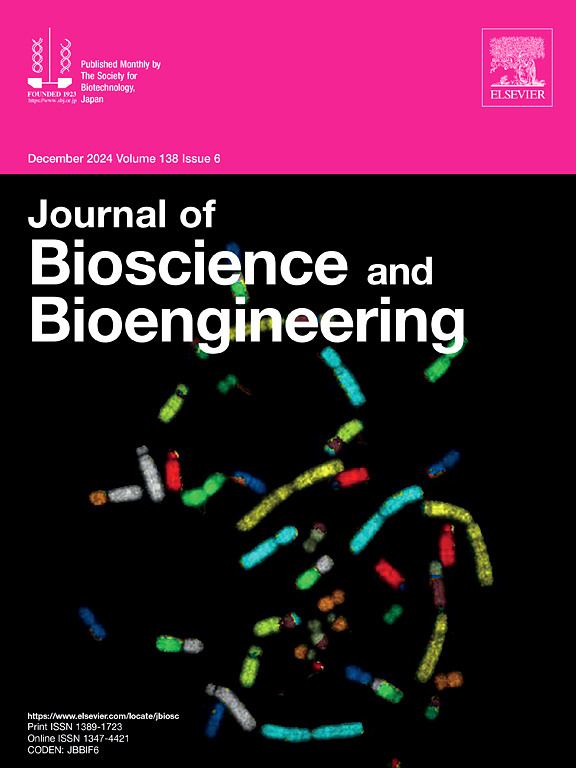具有高甲醛耐受性的 44 号假单胞菌的分离及在废水处理中的应用。
IF 2.3
4区 生物学
Q3 BIOTECHNOLOGY & APPLIED MICROBIOLOGY
引用次数: 0
摘要
对甲醛(FA)具有抗性的细菌和真菌有望利用生化处理来降解废水中的FA。假单胞菌sp. 44携带FA歧化酶和几个FA脱氢酶基因,从工业废水中分离出FA降解菌株,该菌株与以往报道的FA降解细菌的基因组序列不匹配。在保持低细胞密度(OD600 = 0.1)的情况下,FA (1 g L-1)在6 h内几乎全部降解,之后细胞以增殖为主。此外,将细胞密度增加到OD600 = 1.0时,即使浓度高达5 g L-1,也能在3 h内保持较高的FA抗性和快速降解性能。随着FA的分解,甲酸的浓度会暂时升高,但随着培养的进行,甲酸的浓度会逐渐消失,这表明该菌株也具有较高的甲酸脱氢酶活性。这一实际性能超过了任何报道的fa降解微生物,包括真菌。真空干燥的细菌细胞在磷酸盐存在下表现出与活细胞相同水平的FA分解特性,这是由于酶活性的维持。44号菌株干燥后的细菌细胞易于处理和储存,通过适当的时间间隔添加菌株,有望使废水中FA浓度维持在各区域排放调节浓度以下。本文章由计算机程序翻译,如有差异,请以英文原文为准。
Isolation and application to wastewater treatment of Pseudomonas sp. No. 44 possessing high formaldehyde tolerance
Bacteria and fungi that are resistant to formaldehyde (FA) are expected to use biochemical processing to degrade FA in wastewater. Pseudomonas sp. No. 44, which carries the FA dismutase and several FA dehydrogenase genes, was isolated from industrial wastewater as an FA-degrading strain that did not match the genome sequence of any previously reported FA-degrading bacteria. While maintaining a low cell density (OD600 = 0.1), almost all the FA (1 g L−1) was degraded within 6 h, after which cell proliferation predominated. Furthermore, increasing the cell density to OD600 = 1.0 maintained high FA resistance and rapid degradation performance within 3 h, even at concentrations as high as 5 g L−1. Formic acid, which temporarily increased in concentration as the FA decomposed, disappeared as the culture progressed, suggesting that this strain also exhibited high formate dehydrogenase activity. This practical performance exceeded that of any reported FA-degrading microorganism, including fungi. Vacuum-dried bacterial cells exhibited FA decomposition properties at the same level as those of live cells in the presence of phosphate due to the maintenance of enzymatic activity. The dried bacterial cells of strain No. 44, which are easy to handle and store, are expected to allow the maintenance of FA concentration in wastewater below the emission regulation concentration for each region through the addition of the strain at appropriate intervals.
求助全文
通过发布文献求助,成功后即可免费获取论文全文。
去求助
来源期刊

Journal of bioscience and bioengineering
生物-生物工程与应用微生物
CiteScore
5.90
自引率
3.60%
发文量
144
审稿时长
51 days
期刊介绍:
The Journal of Bioscience and Bioengineering is a research journal publishing original full-length research papers, reviews, and Letters to the Editor. The Journal is devoted to the advancement and dissemination of knowledge concerning fermentation technology, biochemical engineering, food technology and microbiology.
 求助内容:
求助内容: 应助结果提醒方式:
应助结果提醒方式:


